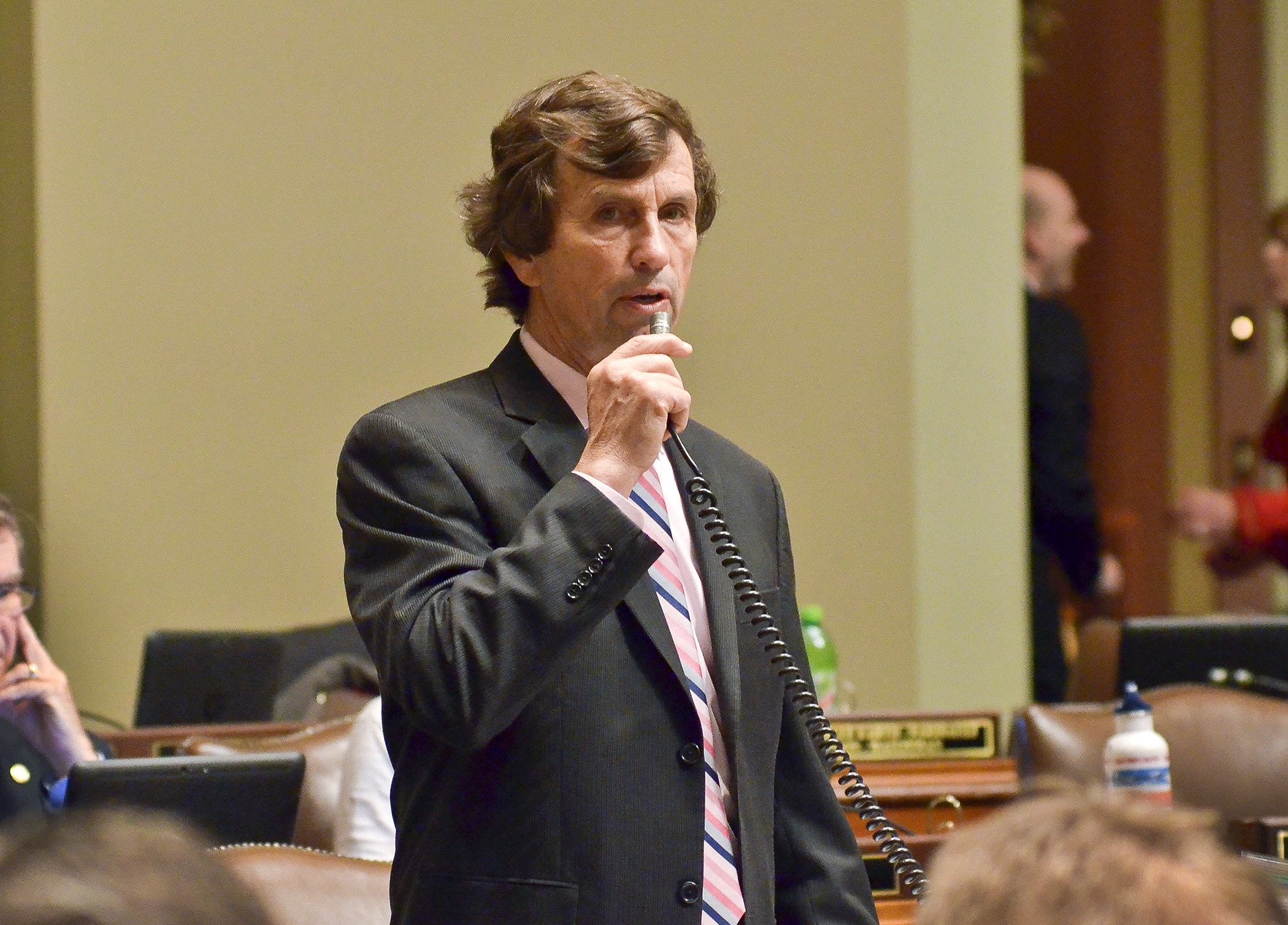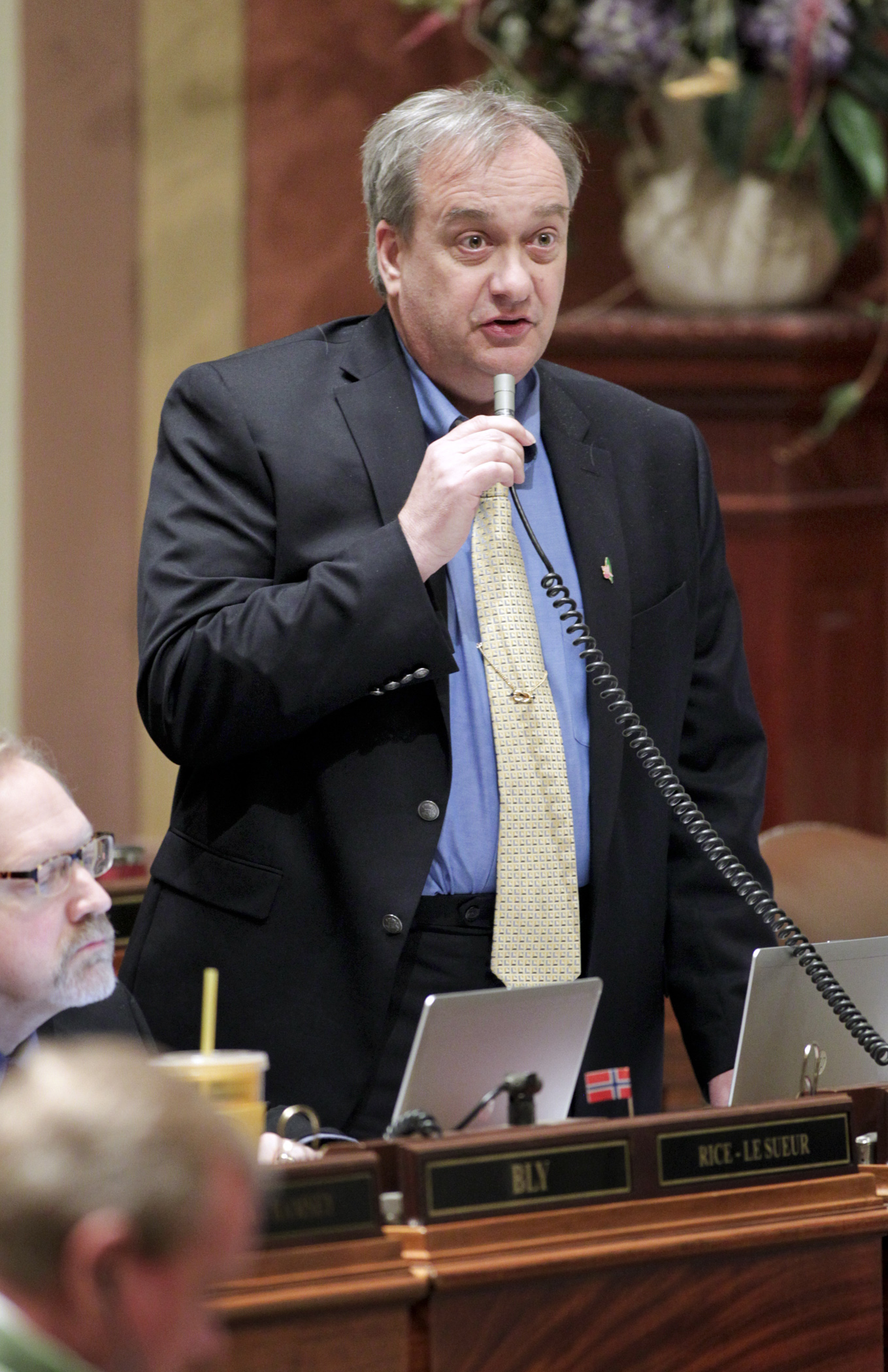New buffers language, avian flu money as omnibus environment, ag. bill repassed

The House gave its final stamp of approval to more than $860 million in biennial appropriations for agriculture and the environment Monday, voting 83-50 to repass HF846*/SF1764 — the session’s omnibus environment, natural resources and agriculture policy and finance bill.
It now heads to the Senate.
Rep. Denny McNamara (R-Hastings), who previously said the bill contained a lot of “commonsense reforms,” opened debate by describing some of the changes it went through during the conference committee process that has taken place over the last few days.
There is new language that seeks common ground between Gov. Mark Dayton’s initiative to reduce pollution by increasing buffers along waters around the state, and concerns from some agriculture groups that these new laws would prove expensive to farmers and other landowners.
House and Senate conferees, working to find consensus on the bill, struggled through the weekend to find that compromise, reconvening at 2 a.m. Monday morning to tweak buffer language that had been added by amendment the day before.
The bill now mandates a minimum buffer width of 16.5 feet on all public ditches.
“There’s no 50-foot requirement here, this is down to the one rod,” said McNamara, the bill sponsor. “You can think of it as about the length of a canoe.”
 During the May 18 floor debate, Rep. Rick Hansen speaks in opposition to the conference committee report on the omnibus environment and agriculture bill. Photo by Paul Battaglia
During the May 18 floor debate, Rep. Rick Hansen speaks in opposition to the conference committee report on the omnibus environment and agriculture bill. Photo by Paul BattagliaLandowners found in violation would have 11 months to correct the issue before being subject to a $500 fine. However, they could also receive a refund of half that amount under the proposed rule.
“It’s my hope, with the help of the ag groups, there will be no fines going forward,” McNamara said.
He noted there were “all kinds of tools” farmers could use to get the work done.
Counties and municipalities would also be required to make sure public shorelands have an average buffer of 50 feet.
Several representatives questioned the effectiveness of the new language. Rep. Jean Wagenius (DFL-Mpls) said those who didn’t want to comply could write off what would ultimately be a $250 fine and do nothing to improve their buffers.
“Then where are we? We’re no place,” Wagenius said. “You have written something that doesn’t do what you said you wanted it to. This bill just doesn’t work for protecting waters.”
Citizens’ Board eliminated
One of the most controversial outcomes, if the bill becomes law, would be elimination of the Pollution Control Agency’s Citizens’ Board. While earlier language would have removed much of the decision-making authority currently held by the board, the conference committee went one-step further and disbanded it altogether.
Objections to the board’s authority surfaced earlier this session with a bill introduced by Rep. Dan Fabian (R-Roseau), who said he wanted to eliminate the uncertainty businesses face during the permitting process when the board has final say over a permit’s approval.
Rep. Frank Hornstein (DFL-Mpls) called eliminating the board an “extreme measure” he did not expect.
“I think it is hugely problematic and objectionable,” Hornstein said.
Rep. David Bly (DFL-Northfield) said he was troubled by the effort to remove the board because it eliminated the citizens’ voice from the process.
AIS decal repeal
The bill would also repeal a controversial new law, set to take effect this July, which requires boaters to display a trailer decal certifying they’ve taken an education course teaching best practices to stop the spread of aquatic invasive species. Instead, the bill would add language to applications for all watercraft and nonresident fishing licenses asking applicants to affirm they profess awareness of invasive species prevention.
The biennial environment and natural resources appropriations in HF846*/SF1764 are:
- Department of Natural Resources – $525.9 million
- Pollution Control Agency – $186.8 million
- Board of Water and Soil Resources – $26.7 million
- Met Council – $17.5 million
- Zoo Board – $16.8 million
- Science Museum of Minnesota – $2.16 million
- Conservation Corps – $1.89 million
- Administration – $600,000
Other environment and natural resources provisions in the bill would:
- require an independent review of certain water quality standards by people not working for the PCA;
- require the PCA to defer enforcement of an environmental violation for at least 90 days if the regulated entity notifies the agency within two business days of the violation coming to its attention;
- extinguish the school trust interest in lands that are not generating long-term economic return;
- establish a grant program promoting more recycling in rural parts of the state by awarding grants for recycling efforts in cities and townships outside the metro area with a population of less than 45,000;
- obtain cost estimates for augmenting water levels in White Bear Lake;
- create accounts to cover the costs of managing DNR conservation easements;
- allow ATV riders between the ages of 12 to 15 to ride on public roads or streets to access a business in counties or cities that permit that by ordinance;
- appropriate $2 million for shooting sports facility grants;
- make the purchaser subject to penalty for failing to apply for transfer of snowmobile ownership within 15 days of an ownership change; and
- exempt a private truck wash operated as part of a livestock farm or animal feedlot from certain permits issued by PCA.
Agriculture appropriations and policy
The bill would also appropriate more than $87 million for the Department of Agriculture. This includes a section of appropriations to fund avian influenza response activities. MDA ($3.62 million), the Board of Animal Health ($1.85 million) and the Department of Health ($103,000) would all receive funds for that purpose.
The DNR would receive $350,000 for detection and monitoring of the virus in wild animals and the Department of Public Safety would get $544,000 to operate the State Emergency Operations Center in coordination with the response. There is also a provision to allow any unused appropriations to be transferred between the agencies to cover expenses related to the avian flu response.
Another provision would appropriate $2 million to the University of Minnesota to research the causes of avian flu, and how to prevent it, and there is a $10 million appropriation for revolving loans that those impacted by avian flu can draw from as they work to recover from the outbreak.
Industrial hemp
The framework for a pilot project to study industrial hemp was also included. It would authorize the MDA, along with higher education institutions, to study the benefits and opportunities industrial hemp may provide the state’s farmers. Hemp seeds and oil can be used to make a variety of products, from fabrics and foods to fuels and paper.
Home cooking
Another provision would change the income limit for home cooks and gardeners who sell their products to the public. It would allow them to sell directly to consumers beyond community events and farmers’ markets and raise their annual sales limit from $5,000 to $18,000.
Other agriculture provisions included would:
- create three production-based bioenergy grant programs, to be administered by the MDA, to encourage advanced biofuel, renewable chemical and biomass thermal production;
- form an Agriculture, Research, Education, Extension, and Technology Transfer Board to award grants to projects that help Minnesota achieve long-term agricultural productivity;
- create a new loan program to help farmers add value to crop or livestock, improve efficiency, achieve environmental improvements and increase on-farm energy production;
- establish a pilot program at the Northeast Regional Corrections Center to train inmates for careers as butchers upon release;
- fund grants to Second Harvest Heartland for the purchase and distribution of fresh milk to charitable organizations;
- appropriate $100,000 to identify emerging opportunities for agriculture producers and processers in Cuba;
- require structural pest control license holders to have a valid license ID to buy restricted use pesticides identified as particularly dangers to humans and the environment if used incorrectly; and
- require a proposal to effectively and efficiently promote urban agriculture, including a refined definition of that term if appropriate.
Related Articles
Search Session Daily
Advanced Search OptionsPriority Dailies
Ways and Means Committee OKs proposed $512 million supplemental budget on party-line vote
By Mike Cook Meeting more needs or fiscal irresponsibility is one way to sum up the differences among the two parties on a supplemental spending package a year after a $72 billion state budg...
Meeting more needs or fiscal irresponsibility is one way to sum up the differences among the two parties on a supplemental spending package a year after a $72 billion state budg...
Minnesota’s projected budget surplus balloons to $3.7 billion, but fiscal pressure still looms
By Rob Hubbard Just as Minnesota has experienced a warmer winter than usual, so has the state’s budget outlook warmed over the past few months.
On Thursday, Minnesota Management and Budget...
Just as Minnesota has experienced a warmer winter than usual, so has the state’s budget outlook warmed over the past few months.
On Thursday, Minnesota Management and Budget...